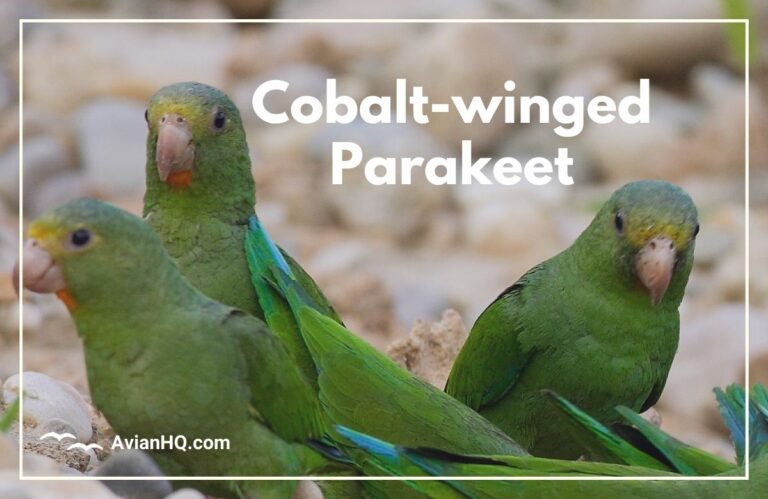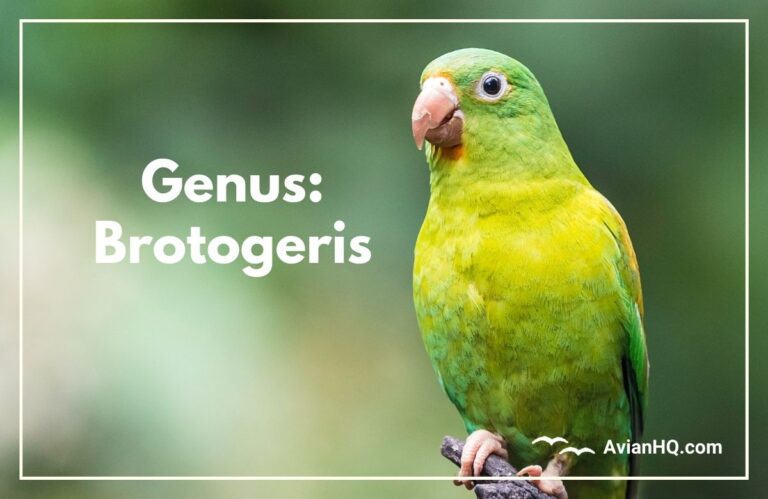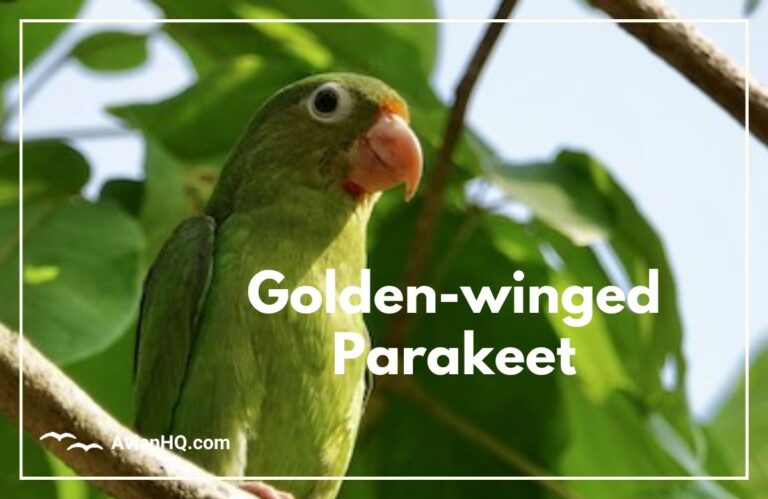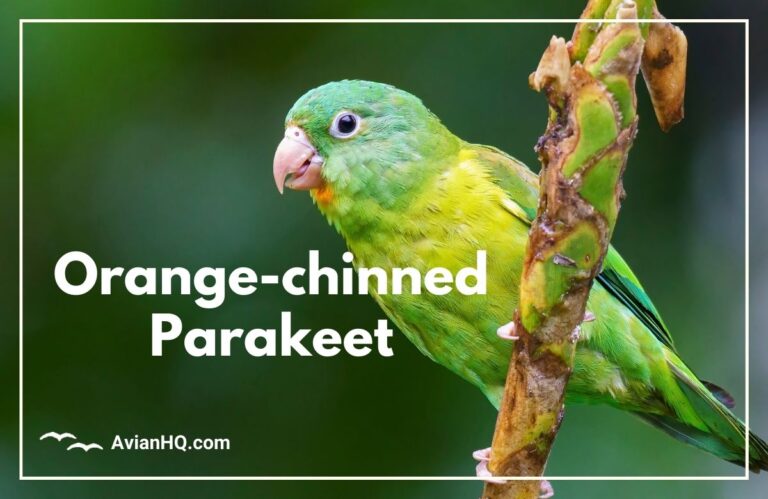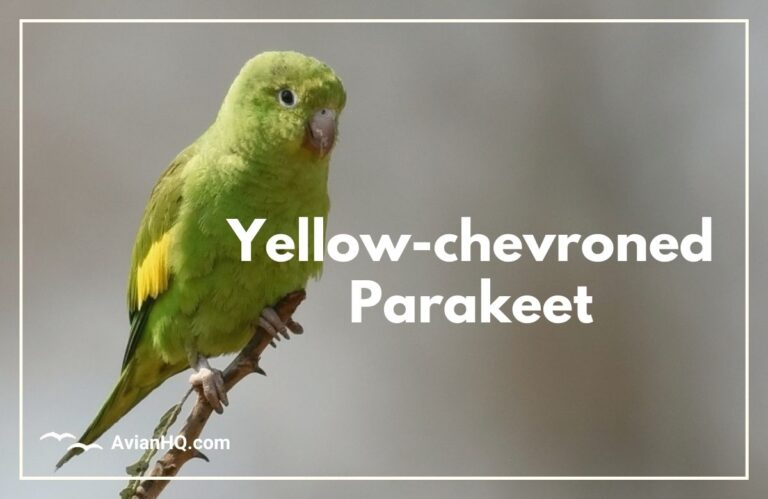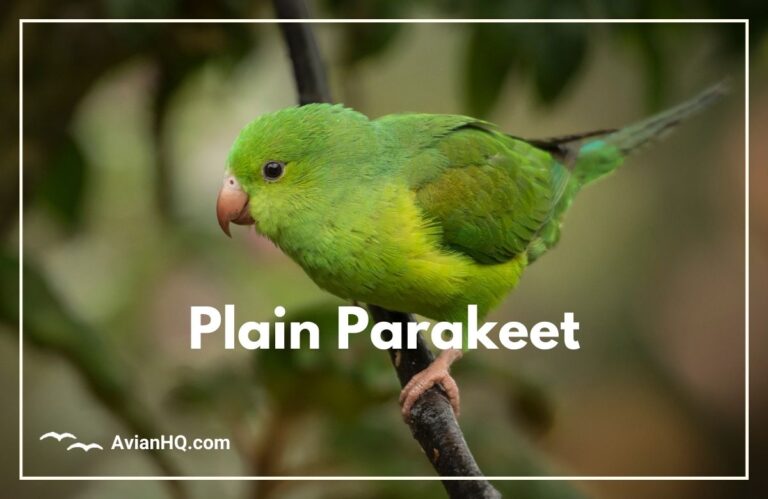White-winged Parakeet (Brotogeris versicolurus)
The White-winged Parakeet (Brotogeris versicolurus) is a captivating bird species known for its vibrant plumage and sociable behavior. This species of parakeet, native to South America, has captured the attention of bird enthusiasts worldwide with its stunning colors and unique characteristics.
With its striking white-winged pattern, the White-winged Parakeet stands out among other bird species. Its feathers display a combination of beautiful blues, greens, and yellows, making it a visually appealing sight in its natural habitat.
Brotogeris versicolurus is a medium-sized parakeet, measuring around 23 centimeters in length. Despite its small size, this bird establishes strong social bonds and forms large flocks with other individuals, exhibiting its sociable nature.
In this article, we will explore the history and taxonomy of the White-winged Parakeet, delve into its physical appearance, habitat, diet, breeding behavior, and ecological interactions. Additionally, we will touch upon its conservation status and cultural significance.
Join us in discovering the captivating world of the White-winged Parakeet and unravel the secrets behind its dazzling plumage, making it a beloved and unique bird species.
History and Taxonomy
In the fascinating history of the White-winged Parakeet, its first discovery took place during scientific expeditions to South America in the 18th century. This vibrant bird species captured the attention of explorers and naturalists, leading to its subsequent naming and classification.
First Discovery and Naming
During scientific voyages to South America, the White-winged Parakeet was encountered for the first time. Its unique appearance, characterized by vibrant plumage and sociable behavior, made it an intriguing subject of study. Following its discovery, the bird was named and documented, allowing for further research and understanding of its characteristics and habitat.
Scientific Classification
The White-winged Parakeet belongs to the scientific classification known as Brotogeris versicolurus. As part of the Psittacidae family, it is classified under the order Psittaciformes. The scientific classification provides a systematic way to categorize and understand the genetic relationships and evolutionary history of this bird species.
Subspecies
Within the White-winged Parakeet species, several subspecies have been identified. These subspecies exhibit slight variations in physical features, geographical range, and behavior, contributing to the fascinating diversity within the species. Each subspecies offers valuable insights into the adaptability and evolution of the White-winged Parakeet population.
| Subspecies | Scientific Name | Geographic Range |
|---|---|---|
| White-winged Parakeet – Eastern | Brotogeris versicolurus versicolurus | Eastern South America |
| White-winged Parakeet – Western | Brotogeris versicolurus chrysoptera | Western South America |
The table above showcases two of the identified subspecies of the White-winged Parakeet, highlighting their scientific names and corresponding geographic ranges. These subspecies provide valuable insights into the natural variations within the White-winged Parakeet population.
Physical Appearance
Size and Weight
The White-winged Parakeet is a small to medium-sized parrot, measuring around 23 centimeters in length.
Plumage
The plumage of the White-winged Parakeet is vibrant and eye-catching. The upperparts are primarily green, while the underparts are lighter with a yellowish-green tint. The wings feature distinctive white patches, which give the species its name. The head is adorned with a black crown, and the throat is yellowish. The tail is long and graduated, with the outer feathers being bluish-green. Overall, the plumage of the White-winged Parakeet is a beautiful combination of greens, yellows, and blues.
Bill, Eyes, Legs
The White-winged Parakeet has a short, strong bill that is curved and sharp at the tip. The bill is greyish in color. The eyes are dark brown, complementing the vibrant plumage. The legs are short and sturdy, ending in strong clawed feet that enable the parakeet to grip onto branches and explore its habitat with agility.
| Physical Traits | Description |
|---|---|
| Size | Around 23 centimeters in length |
| Plumage | Mainly green with white wing patches; black crown and yellowish throat; bluish-green tail feathers |
| Bill | Short, strong, and curved; greyish in color |
| Eyes | Dark brown |
| Legs | Short and sturdy; ending in strong clawed feet |
Habitat and Distribution
The White-winged Parakeet (Brotogeris versicolurus) is naturally found in the lowland forests, savannas, and woodlands of South America. Its native geographic range extends from eastern Venezuela, Guyana, Suriname, and French Guiana to northern Brazil and eastern Peru. Within this range, the parakeet inhabits a variety of habitats, including tropical rainforests, gallery forests along rivers, and open savannas with scattered trees.
While the White-winged Parakeet is primarily native to South America, it has been introduced to other parts of the world, including Florida in the United States and various Caribbean islands. These introduced populations are believed to have originated from escaped or released birds from the pet trade. The parakeets have adapted well to their new environments and have established breeding populations in these introduced areas.
The White-winged Parakeet can be found at a range of elevations within its native and introduced habitats. In South America, it is generally found at elevations up to 1,500 meters (4,900 feet) above sea level, but it has also been recorded at higher elevations.
| Native Geographic Range | Introduced Populations | Elevation Range |
|---|---|---|
| Eastern Venezuela, Guyana, Suriname, French Guiana, northern Brazil, eastern Peru | Florida (United States), Caribbean islands | Up to 1,500 meters (4,900 feet) above sea level |
Diet and Feeding
The White-winged Parakeet (Brotogeris versicolurus) has a primarily herbivorous diet, consisting mainly of fruits, seeds, nuts, and berries. These birds have adapted to consume a variety of plant materials found in their natural habitat.
Due to their diet, White-winged Parakeets play an important role in seed dispersal, aiding in the regeneration and diversity of plant species in their ecosystem.
Specific Foods Consumed
The specific foods consumed by White-winged Parakeets include:
- Fruits: They feed on a wide range of fruits such as berries, apples, pears, and figs.
- Seeds: White-winged Parakeets have strong, hooked bills that they use to crack open seeds and extract the nutritious contents.
- Nuts: They have the ability to efficiently crack open nuts like almonds and walnuts to access the high-fat content inside.
- Berries: They consume various types of berries, including blueberries, blackberries, and raspberries, which provide them with essential vitamins and antioxidants.
- Flowers: White-winged Parakeets also consume nectar from flowers, which serves as a source of energy.
Feeding Behaviors
White-winged Parakeets exhibit various feeding behaviors to acquire their diet:
- Foraging: They actively search for food in trees, shrubs, and the forest floor, often in flocks, allowing them to find and exploit food resources efficiently.
- Browsing: They nibble on the bark, leaves, and twigs of trees and plants, which provides them with additional nutrients and fiber.
- Seed Husking: They use their strong bills to remove the husks from seeds before consuming them.
- Fruit Picking: White-winged Parakeets can pluck fruits from branches or trees and consume them whole or break them into smaller pieces with their beaks.
The feeding behaviors of White-winged Parakeets reflect their adaptability to different food sources and their ability to thrive in various habitats.
| Dietary Component | Examples |
|---|---|
| Fruits | Berries, apples, pears, figs |
| Seeds | Various plant seeds |
| Nuts | Almonds, walnuts |
| Berries | Blueberries, blackberries, raspberries |
| Flowers | Nectar from flowers |
Breeding and Reproduction
White-winged Parakeets are monogamous and form pair bonds for breeding.
Nesting Sites
White-winged Parakeets typically choose tree cavities for nesting sites. They often select hollows in old trees or take advantage of abandoned woodpecker nests.
Clutch Size
The clutch size of White-winged Parakeets ranges from 2 to 5 eggs. However, the average clutch size is usually around 3 to 4 eggs.
Incubation and Fledging
The incubation period for White-winged Parakeet eggs lasts approximately 24 to 28 days. Both the male and female take turns incubating the eggs. After hatching, the chicks remain in the nest for around 7 to 8 weeks before fledging.
| Aspect | Information |
|---|---|
| Incubation Period | 24 to 28 days |
| Fledging Age | 7 to 8 weeks |
Behavior and Ecology
White-winged Parakeets are highly social birds that exhibit fascinating behavior and play important roles in their ecological communities. They are known for forming large flocks, which can consist of several hundred individuals.
Flock Sizes
White-winged Parakeets are characterized by their gregarious nature and tendency to gather in large groups. These flocks can vary in size, ranging from smaller groups of a few dozen individuals to massive congregations comprising hundreds of parakeets. The formation of such large flocks provides numerous benefits, including increased foraging efficiency, improved predator detection, and enhanced social interactions among individuals.
Roosting Patterns
White-winged Parakeets exhibit interesting roosting patterns, often selecting communal roost sites to spend their nights. These communal roosts can be found in a variety of locations, including tree cavities, hollows, and dense vegetation. The parakeets gather together in these communal roosts, creating a spectacle of social interaction and vocalization as they settle down for the night.
Foraging and Feeding
When it comes to foraging and feeding, White-winged Parakeets primarily consume a variety of plant-based foods. Their diet mainly consists of fruits, seeds, nuts, and berries. They possess strong bills that allow them to crack open tough seed shells and extract the nutritious contents. These parakeets are also known to visit fruit-bearing trees and shrubs, actively feeding on ripe fruits and contributing to seed dispersal in the process.
Interactions with Other Species
White-winged Parakeets often interact with other bird species in their habitat. These interactions can vary from competitive to cooperative, depending on factors such as resource availability and social dynamics. For instance, parakeets may compete with other frugivorous birds for food resources when the availability of ripe fruits is limited. However, they can also engage in mixed-species foraging flocks, where different species cooperate to efficiently locate and exploit food sources.
| Interaction with Other Species | Description |
|---|---|
| Competition for Food | White-winged Parakeets may compete with other bird species for limited food resources, such as ripe fruits. |
| Mixed-Species Foraging Flocks | White-winged Parakeets can form mixed-species foraging flocks, cooperating with other bird species to locate and exploit food sources. |
| Communal Roosting | White-winged Parakeets often share communal roosts with other bird species, creating diverse and dynamic roosting communities. |
Conservation Status
The White-winged Parakeet (Brotogeris versicolurus) is classified as a species of “Least Concern” by the International Union for Conservation of Nature (IUCN). This classification indicates that the population of White-winged Parakeets is relatively stable, with no immediate threat of extinction.
IUCN Classification
The IUCN classifies the White-winged Parakeet as a species of “Least Concern” due to its widespread distribution and large population size. White-winged Parakeets are found in various countries across South America, including Brazil, Bolivia, and Peru, among others.
Population Estimates and Trends
Estimating the population of White-winged Parakeets is a challenging task due to their wide range and ability to adapt to different habitats. However, population estimates suggest that their numbers remain stable or are increasing in certain regions. Ongoing studies and monitoring efforts continue to provide valuable data on population trends.
Major Threats
While the White-winged Parakeet currently faces no immediate threat of extinction, it is still vulnerable to various threats. Deforestation, habitat loss, and degradation are significant concerns, as these activities reduce suitable habitats for the species. Additionally, capture for the pet trade and competition with introduced species pose additional challenges to their conservation.
Protection Efforts
To ensure the long-term survival of the White-winged Parakeet, conservation efforts are underway. These efforts include the establishment of protected areas and reserves to safeguard their habitats. Awareness campaigns and community engagement programs also play a crucial role in promoting the conservation of this species. Collaborative initiatives involving governments, NGOs, and local communities are essential for successful conservation outcomes.
Cultural Significance
The White-winged Parakeet holds great cultural significance in the regions where it is native, especially within indigenous communities. The vibrant plumage and sociable behavior of these parakeets have captivated and inspired people for generations.
“The White-winged Parakeet is not just a beautiful bird, but it is also deeply connected to our culture and traditions. Its presence is seen as a symbol of joy, freedom, and harmony in our community.” – Indigenous Elder
Indigenous cultures often incorporate the White-winged Parakeet into their folklore, stories, and art. The bird’s striking appearance and lively nature make it a popular subject for traditional paintings, carvings, and textiles. In some communities, the parakeet is believed to bring good luck and blessings.
Furthermore, the White-winged Parakeet’s adaptability to various habitats has contributed to its cultural significance among local communities. It is seen as a resilient and resourceful species, revered for its ability to thrive in different environments.
Through its cultural significance, the White-winged Parakeet serves as a bridge between nature and human society, reinforcing the importance of conservation efforts to protect both the bird and its habitat.
Conclusion
The White-winged Parakeet, also known as Brotogeris versicolurus, is a captivating bird species with its vibrant plumage, sociable behavior, and remarkable adaptability to diverse environments. Its striking appearance, characterized by colorful feathers, makes it a visually captivating bird that stands out in its natural habitat.
Native to the forests, savannas, and woodlands of South America, the White-winged Parakeet has managed to establish introduced populations in various regions around the world. Its ability to adapt to different environments has allowed it to thrive and successfully expand its geographic range.
As a social bird, the White-winged Parakeet typically forms large flocks, demonstrating its preference for communal living. These flocks can consist of several hundred individuals, emphasizing the sociable nature of this species. The White-winged Parakeet’s behavior, including roosting patterns and foraging habits, showcases its adaptability and resilience.
While the White-winged Parakeet is known to have cultural significance in the regions where it is native, it also plays a crucial ecological role. As a seed disperser, this species contributes to forest regeneration and plant diversity. Despite facing some threats, the White-winged Parakeet is currently classified as a species of “Least Concern” by the International Union for Conservation of Nature (IUCN).


